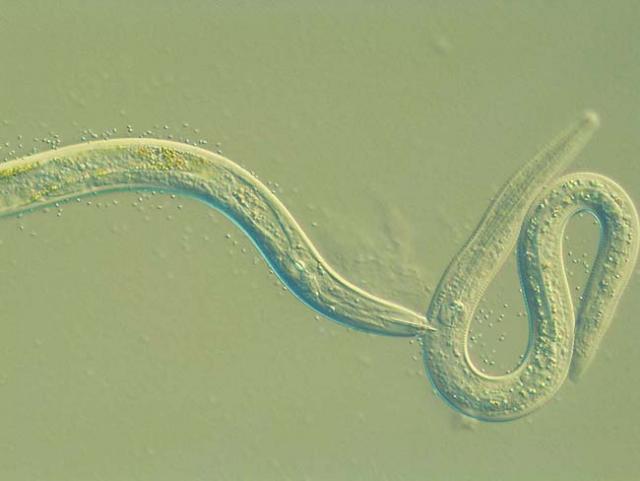Home > Research > Research Results > Research Results 2019 > Discovery of a new species of predatory nematode: Exploring its potential as a biological control material
Update:February 20, 2019
Main content starts here.
Discovery of a new species of predatory nematode: Exploring its potential as a biological control material
| Article title |
Seinura caverna n. sp. (Tylenchomorpha: Aphelenchoididae) an androdioecious species isolated from bat guano in a calcareous cave |
|---|---|
| Author (affiliation) |
Natsumi Kanzaki (a), Taisuke Ekino (b), Hayato Masuya (c) (a) Kansai Research Center, FFPRI, Kyoto, Japan. (b) Kagoshima University, Kagoshima, Japan. (c) Department of Mushroom Science and Forest Microbiology, FFPRI, Tsukuba, Ibaraki, Japan. |
| Publication Journal |
Nematology, 21:207-225, Brill DOI:10.1163/15685411-00003207( External link ) |
| Content introduction |
Nematodes comprise many species, both harmful (agriculture and forestry pests and human parasites) and beneficial (model organisms and biological control materials). Understanding what nematode species exist and their habitats is essential to control harmful species and efficiently use beneficial ones. In this study, we investigated nematode diversity and discovered a new species that preys on nematodes in bat guano (feces), which accumulates in limestone caves. In general, predating nematodes are difficult to culture, which has prevented the establishment of stable culture systems. However, the new species was successfully cultured through appropriate selection of feed nematode species, and it was described as Seinura caverna. Investigation of the biological characteristics of this nematode revealed that it is a hermaphrodite (*Note) and has a nematode-predatory nature. Because hermaphroditic nematodes can propagate from a single individual, genetic analysis and engineering can be easily performed. Therefore, this nematode is expected to be used as a model for further investigation on predatory nematode species, such as the evolution of predation-related genes. We also found that the new species can efficiently prey on many nematode species, including pinewood nematodes, a pathogen that causes pine wilt disease. We are currently investigating the potential use of this nematode for the biological control against harmful nematode species. *Note: A single individual produces both sperm and egg.
|
Copyright © Forest Research and Management Organization. All rights reserved.

